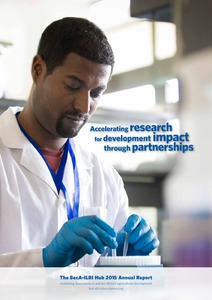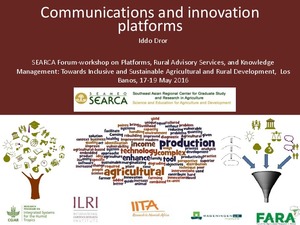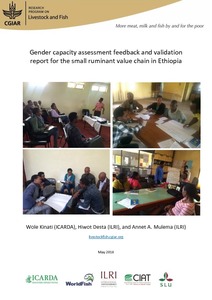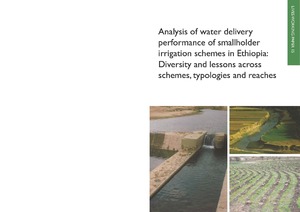Location
Vision, mission and strategy
ILRI's strategy 2013-2022 was approved in December 2012. It emerged from a wide processof consultation and engagement.
ILRI envisions... a world where all people have access to enough food and livelihood options to fulfil their potential.
ILRI’s mission is... to improve food and nutritional security and to reduce poverty in developing countries through research for efficient, safe and sustainable use of livestock—ensuring better lives through livestock.
ILRI’s three strategic objectives are:
- with partners, to develop, test, adapt and promote science-based practices that—being sustainable and scalable—achieve better lives through livestock.
- with partners,to provide compelling scientific evidence in ways that persuade decision-makers—from farms to boardrooms and parliaments—that smarter policies and bigger livestock investments can deliver significant socio-economic, health and environmental dividends to both poor nations and households.
- with partners,to increase capacity among ILRI’s key stakeholders to make better use of livestock science and investments for better lives through livestock.
This is ILRI’s second ten-year strategy. It incorporates a number of changes, many based on learning from the previous strategy (2000–2010, initially produced in 2000 and modified in 2002), an interim strategy (2011–2012) and an assessment of the external and internal environments in which the institute operates.
Members:
Resources
Displaying 151 - 155 of 1152BecA-ILRI Hub 2015 annual report: Accelerating research for development impact through partnerships
Gender capacity assessment feedback and validation report for the small ruminant value chain in Ethiopia
Analysis of water delivery performance of smallholder irrigation schemes in Ethiopia: Diversity and lessons across schemes, typologies and reaches
Irrigation systems consist of three interdependent components involving: the irrigation scheme, the on-farm management and the organizations. The irrigation scheme refers to the infrastructure for water acquisition and distribution (water delivery). This study focused on water delivery performance of 10 smallholders irrigation schemes in four regions of Ethiopia, representing diverse water sources, distribution systems, command areas (50–6000 ha) and number of beneficiary farmers (233–500 farm households) and across agro-ecologies as represented by elevation ranges (1500–2725 masl).
Analysis of water delivery performance of smallholder irrigation schemes in Ethiopia: Diversity and lessons across schemes, typologies and reaches
Irrigation systems consist of three interdependent components involving: the irrigation scheme, the on-farm management and the organizations. The irrigation scheme refers to the infrastructure for water acquisition and distribution (water delivery). This study focused on water delivery performance of 10 smallholders irrigation schemes in four regions of Ethiopia, representing diverse water sources, distribution systems, command areas (50–6000 ha) and number of beneficiary farmers (233–500 farm households) and across agro-ecologies as represented by elevation ranges (1500–2725 masl).





